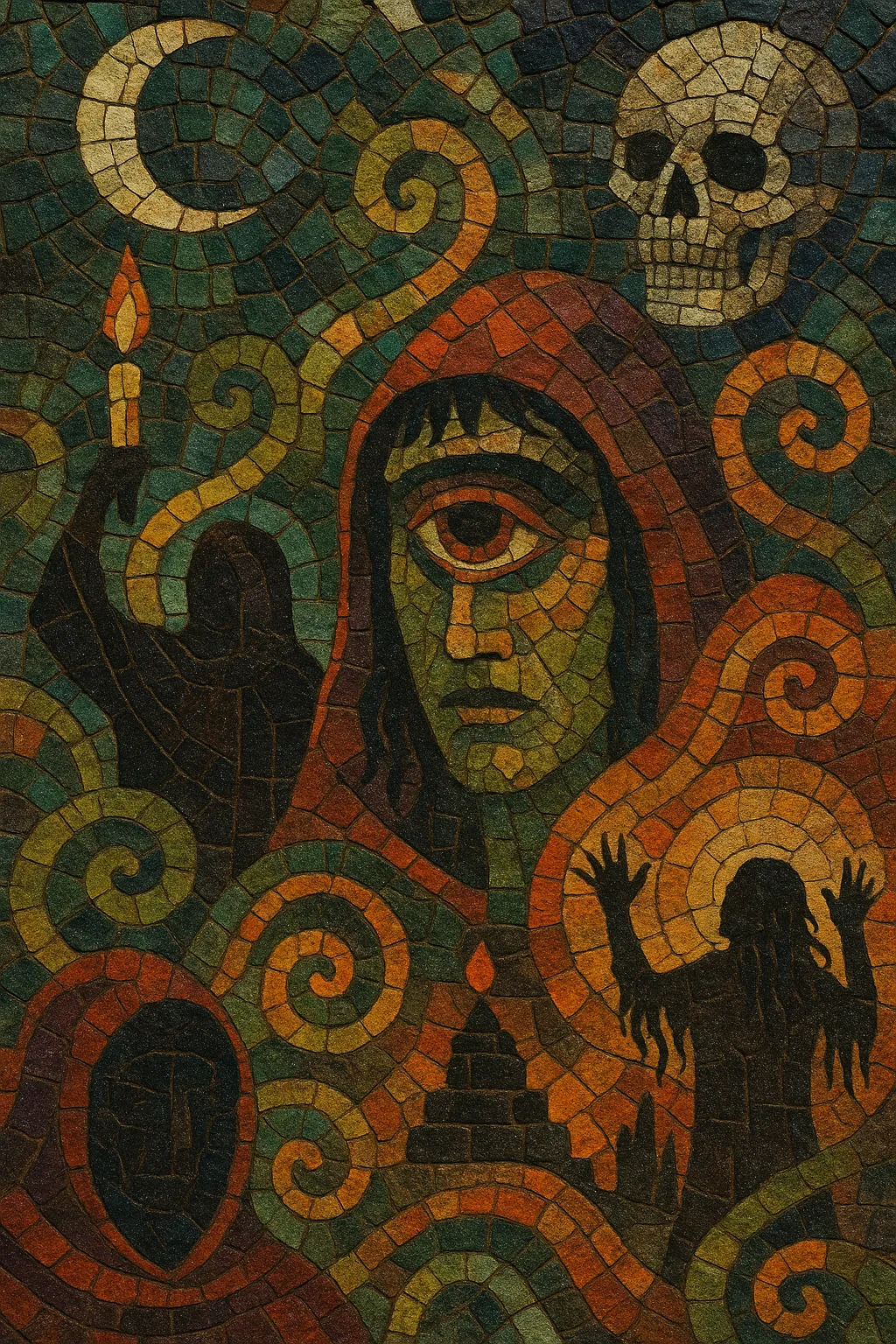Psichedelia occulta italiana (Italian occult psychedelia) is a 2010s Italian underground movement that fuses psychedelic rock with the sinister atmospheres of vintage horror/library scores, ritual folk elements, and post‑industrial murk.
Artists cultivate trance-inducing repetition, droning harmonies, and cinematic sound design reminiscent of 1960s–70s Italian giallo and horror films. The palette often includes fuzzed guitars, Farfisa/VOX organs, analog synths, battered tape echoes, ritual percussion, and whispered or chant-like Italian vocals, projecting a liminal space between hauntological nostalgia and contemporary noise.
The result is music that feels both archaic and modern: a shadowy Mediterranean psych that invokes liturgy, folklore, and celluloid nightmares while embracing krautrock motion, post-punk austerity, and experimental rock abstraction.
The term “Italian Occult Psychedelia” (psichedelia occulta italiana) coalesced in the early 2010s around a loose constellation of Italian bands and labels. Writers and curators highlighted a shared aesthetic: psychedelic rock colored by the eerie aura of classic Italian cinema (giallo, horror, poliziotteschi), the grain of library/soundtrack music, and echoes of Catholic liturgy and southern folk ritual.
Musically, the scene drew on 1960s–70s Italian prog/psych and soundtrack traditions (e.g., Morricone/Goblin schools), kosmische/krautrock motorik, post-punk minimalism, drone and dark ambient density, and Mediterranean folk/tarantism rhythms. Production often favored analog saturation, tape hiss, spring reverb, and foley/field textures to invoke hauntological memory.
Independent Italian labels and DIY circuits (e.g., Boring Machines, Sound of Cobra, Maple Death, and related promoters) provided a platform, while international press features introduced the tag to global psych and experimental audiences. Collaborations and split releases were common, consolidating a recognizable, if fluid, “occult psych” identity without formal boundaries.
By the late 2010s the term functioned less as a strict genre than a curatorial lens for a particularly Italian blend of dark psychedelia. It encouraged renewed interest in historical soundtrack/library idioms, inspired cross-pollination with drone/industrial and folk revival currents, and became a touchstone for subsequent Italian psych and experimental artists.
Use fuzzed or tremolo guitars, Farfisa/VOX organ, analog monosynths (e.g., MS‑20/SH‑101), bass with minimal effects, and a drum kit augmented by tom-heavy patterns, frame drums, and tamburello. Add tape echo (RE‑201 style), spring reverb, and cassette/tape saturation. Layer foley and field recordings—church bells, distant chants, wind, and room tone—to create hauntological space.
Favor drones and pedal points. Write modal lines in Aeolian, Phrygian, or Phrygian dominant to suggest Mediterranean/ritual color. Employ parallel open fifths, quartal voicings, and slow-moving harmonic rhythm. Motifs should be simple, mantra-like, and evolve via timbral change more than chord turnover.
Keep tempos moderate to slow (≈60–90 BPM) with hypnotic, motorik-leaning ostinati. Alternate steady 4/4 trances with occasional folk-inflected meters (5/4, 7/8) or tarantella-derived accents. Build long-form arcs through gradual layering, dynamic swells, and textural crescendos rather than conventional verse–chorus structures.
Use chant-like phrases, whispers, or liturgical cadences in Italian (or wordless vocalise). Lyrics can reference folklore, landscape, and dream/ritual imagery, avoiding literal narratives. Treat the voice as another texture—drenched in reverb, doubled at low level, or processed through tape delay.
Record in rooms with character; embrace bleed and mic distance. Print effects to tape when possible; avoid over‑editing. Contrast dry percussive hits with cavernous spaces. Reference vintage Italian soundtrack/library mixing—foregrounding percussion and bass pulse while letting organs/synths smear into reverb tails.


